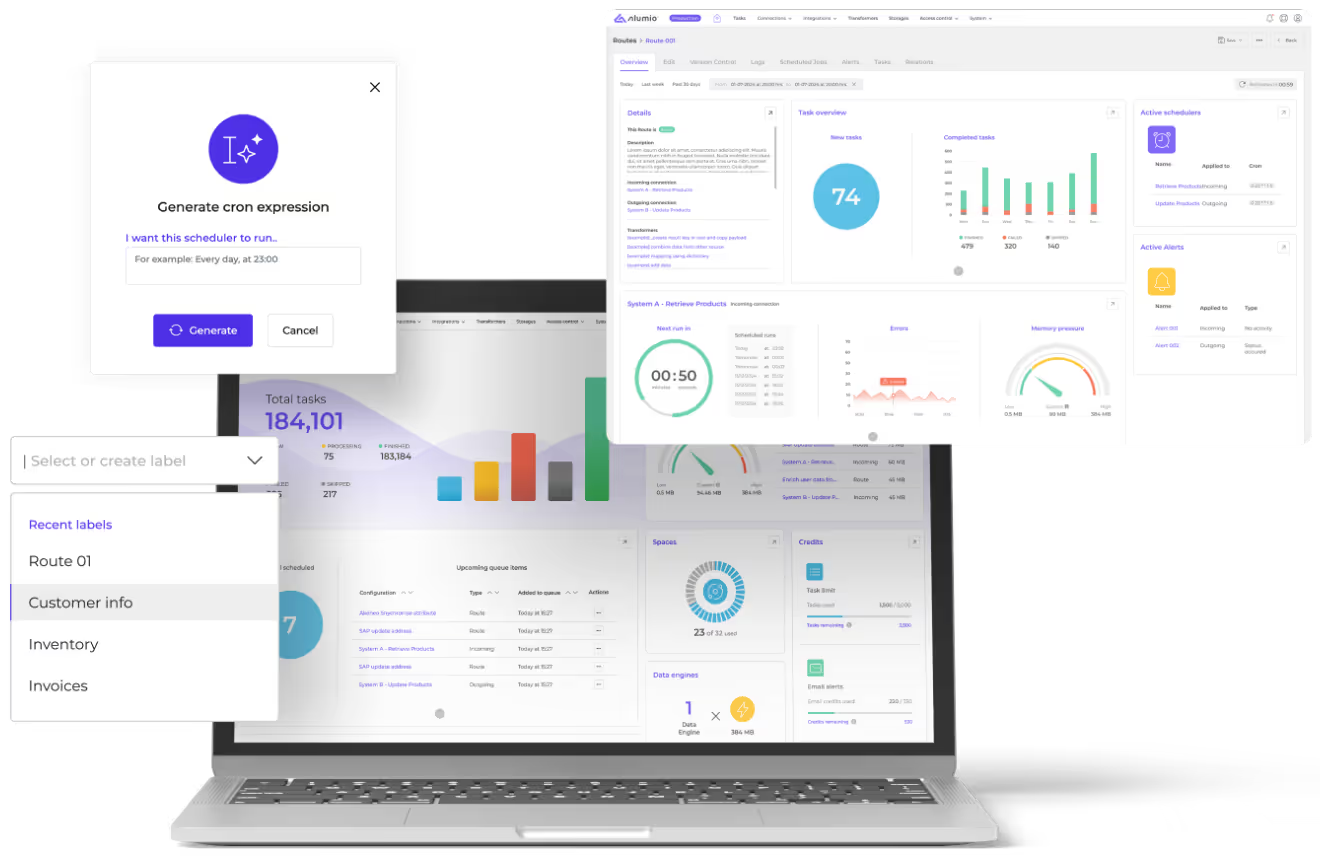The multi-channel revolution: Why integration matters more than ever
The statistics paint a clear picture of where commerce is heading. Omnichannel strategies boost customer retention by 89% and increase purchase rates by 287%, while 69.4 million people from the United States are expected to shop on Facebook in 2025, making it the most popular social media for social commerce. These numbers reveal a fundamental shift in consumer behavior that demands a new approach to e-commerce operations.
But here's the challenge: each sales channel operates with its own systems, data formats, and requirements. Your Shopify store handles inventory differently than Amazon. Your ERP system tracks customer data in a format that doesn't match your email marketing platform. Your payment gateway operates independently from your shipping software. Without proper integration, these disconnected systems create what industry experts call "data silos," isolated pockets of information that prevent businesses from delivering the unified experience customers expect.
The hidden costs of poor data synchronization
The consequences of inadequate multi-channel integration extend far beyond operational inefficiencies. Without data synchronization, changes made to your stock levels could fail to be reflected accurately in your product inventory, which is linked to the e-commerce platforms you sell on. This scenario is more common than you might think, and it's costing businesses millions in lost sales and damaged relationships.
Consider this: a customer finds your product on Google Shopping, clicks through to your website, adds items to their cart, and proceeds to checkout; only to discover the item is out of stock. That's not just a lost sale; it's a broken promise that damages your brand reputation and reduces the likelihood of that customer returning.
The ripple effects of poor e-commerce data synchronization are extensive. Delayed synchronization can result in a time lag between sales channel updates and the availability of accurate information in the OMS or WMS. This can lead to missed sales opportunities, increased customer support costs, and operational inefficiencies that compound over time.
Essential components of multi-channel e-commerce integration
Inventory management integration: The foundation of success
Inventory management integration sits at the heart of successful multi-channel operations. In an environment where some marketplaces and instant commerce platforms require real-time synchronization to integrate your product feeds, the ability to maintain accurate stock levels across all channels isn't just convenient; it's essential for survival.
Effective inventory management integration ensures that when a product sells on Amazon, your Shopify store immediately reflects the updated stock level. When you receive new inventory in your warehouse, all your sales channels automatically update their availability. This real-time synchronization prevents overselling, reduces stockouts, and maintains the trust your customers place in your brand.
Product catalog integration: Consistency across all touchpoints
Managing product information across multiple channels presents unique challenges. Each platform may require different image sizes, description formats, or attribute structures. Product catalog integration solves this by creating a centralized source of truth for all product information, then automatically formatting and distributing that data to each channel according to its specific requirements.
This approach ensures consistency in how your products are presented, regardless of where customers encounter them. Whether they're browsing your website, scrolling through your Facebook shop, or searching on Google Shopping, they'll see the same accurate product information, pricing, and availability.
Order management integration: Streamlining the purchase journey
Once customers start buying from multiple channels, order management integration becomes crucial for maintaining operational efficiency. This integration consolidates orders from all sales channels into a single system, enabling you to process, fulfill, and track orders regardless of where they originated.
Modern order management integration goes beyond simple consolidation. It intelligently routes orders based on inventory location, shipping requirements, and customer preferences. This optimization reduces shipping costs, improves delivery times, and enhances the overall customer experience.
Customer data integration: Building complete customer profiles
Understanding your customers across all touchpoints is essential for delivering personalized experiences and building long-term loyalty. Customer data integration combines purchase history, browsing behavior, support interactions, and engagement data from all channels to create comprehensive customer profiles.
These unified profiles enable sophisticated segmentation, personalized marketing campaigns, and proactive customer service. When a customer contacts your support team, representatives can see their complete interaction history across all channels, enabling more effective and personalized assistance.
Payment gateway integration: Securing multi-channel transactions
As customers engage with your brand across multiple channels, they expect consistent and secure payment experiences. Payment gateway integration ensures that whether customers are buying through your website, mobile app, or marketplace presence, their payment information is processed securely and efficiently.
Modern payment gateway integration also enables advanced features like saved payment methods that work across channels, subscription billing for recurring purchases, and sophisticated fraud detection that protects both your business and your customers.
Shipping integration platform: Optimizing fulfillment operations
Shipping integration becomes increasingly complex as you expand across multiple channels. Different platforms may have different shipping requirements, rate structures, or tracking expectations. A comprehensive shipping integration platform normalizes these differences, enabling you to manage all shipping operations from a single interface while meeting each channel's specific requirements.
Want to learn the difference between multi-channel and omnichannel commerce? Click here.
The technical architecture of successful integration
Implementing effective multi-channel e-commerce integration requires a sophisticated technical approach that can handle the complexity of modern commerce operations. The most successful implementations rely on cloud-native integration platforms that offer the scalability, reliability, and flexibility needed to support growing businesses.
Modern integration platforms utilize API-first architectures that can connect with virtually any system or service. This flexibility is crucial because the e-commerce technology landscape is constantly evolving. New sales channels emerge, existing platforms update their capabilities, and business requirements change as companies grow and expand.
Real-time data synchronization capabilities are non-negotiable in today's fast-paced commerce environment. Manual handling of data becomes increasingly challenging with a growing volume of orders, making automated, real-time integration essential for scalability.

























